
Nature's Giants: Photos of the Tallest Trees on Earth
Life after death
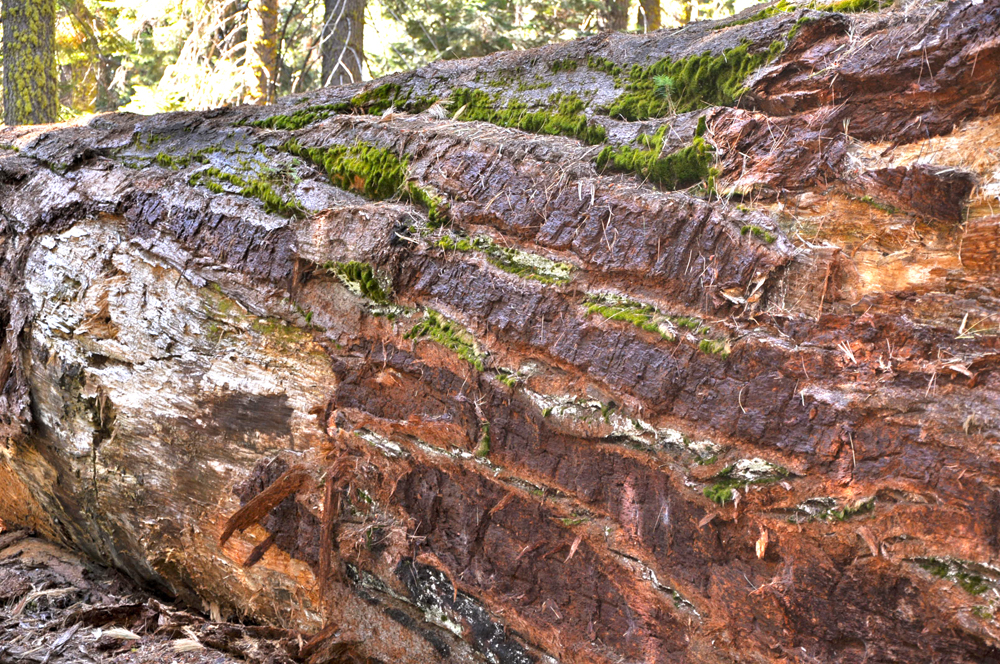
Most Giant Sequoias die as the result of being blown over by powerful mountain storms. The trunk of these forest giants can lie on the forest floor for centuries. But even though the giant tree is dead, the trunk teems with life. Birds, squirrels and mice all make their homes in the fallen giant. Other trees and forest plants will sprout and grow in the nutrient-rich sequoia trunk. Over the centuries, the trunk will decompose and add to the richness of the forest floor.
Materials for reuse
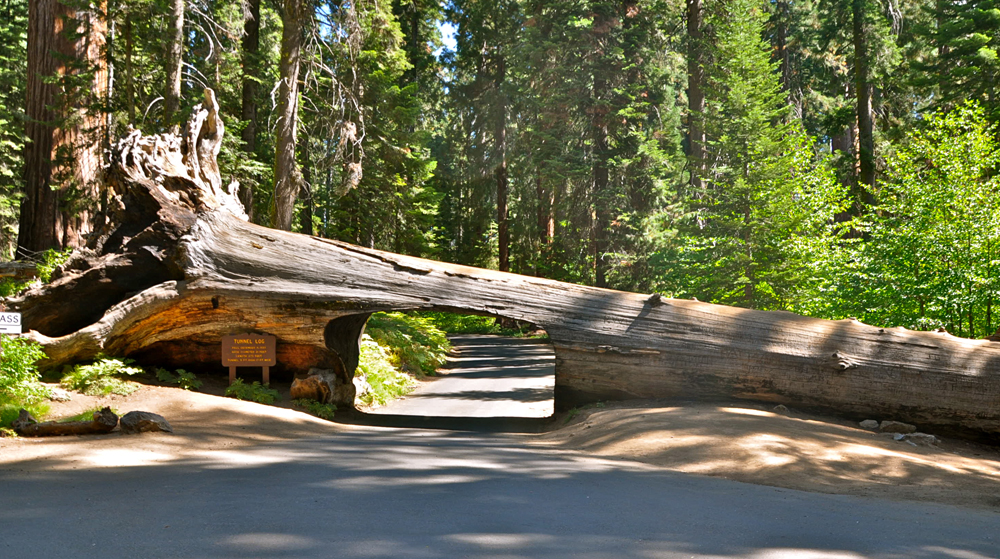
Modern man has taken advantage of fallen sequoias by making them an attraction at national parks. This tree, now known as Tunnel Log, fell across Crescent Meadow Road in Sequoia National Park. The sequoia that was cut to create Tunnel Log fell on Dec. 4, 1937. It had a base diameter of 21 feet (6.4 m) and was 275 feet (83 m) tall. The tunnel is 8 feet (2.4 m) high and 17 feet (5 m) wide.
Tunnel vision
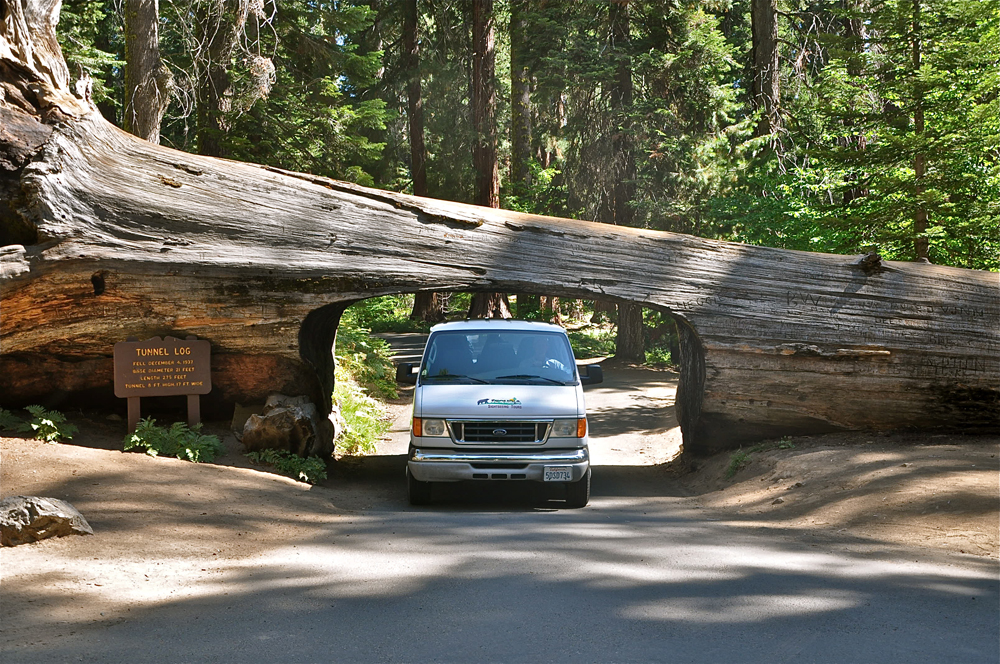
The tunnel is just the right size for a modern van to pass through. For taller recreational vehicles, an alternative road is available. Park rangers estimate that this sequoia was over 2,000 years old when it finally fell on that cold December day of 1937.
Natural groves
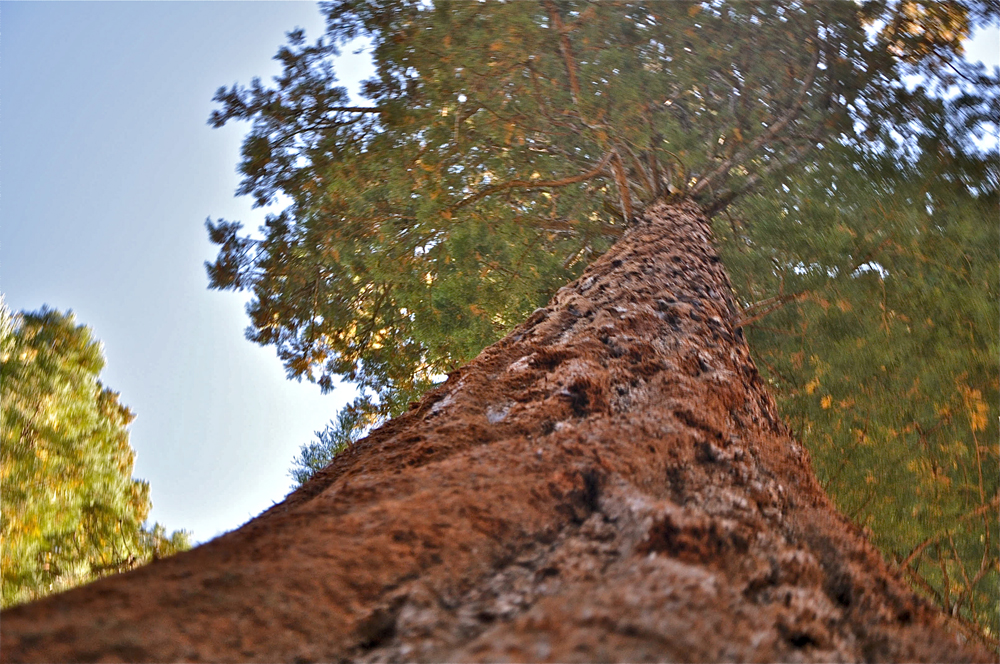
Currently there are 73 naturally occurring sequoia groves in the Sierra Nevada Mountains, 65 of which are named. The total area of those 65 groves is 35,600 acres. The lowest elevation where naturally occurring sequoia are found growing is the Clough Cave Grove just to the west of Sequoia National Park at 2,800 feet (853 m). The highest elevation is the Atwell Mill Grove located in Sequoia National Park at 8,800 feet (2,682 m). There is no current evidence that the current groves are shrinking, as most grove perimeters seem to be stable and a few of the most remote groves actually seem to be expanding
Cluster living
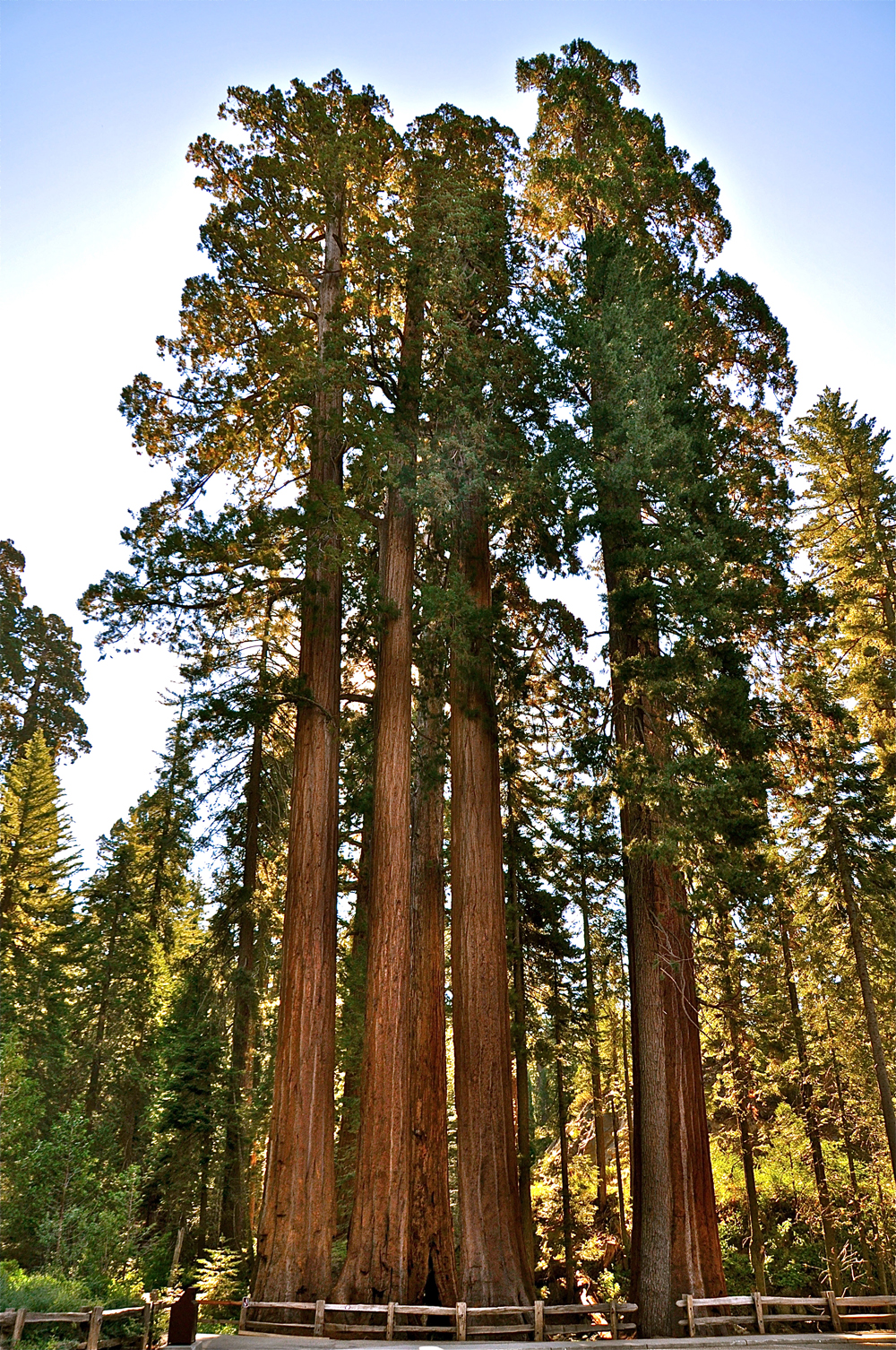
Since Giant Sequoias must compete for an enormous amount of water each day, they most often are found growing away from other giant trees. But as this photo from Kings Canyon National Park shows, a cluster of sequoia trees can survive together when the ground water supply is sufficient.
General Sherman
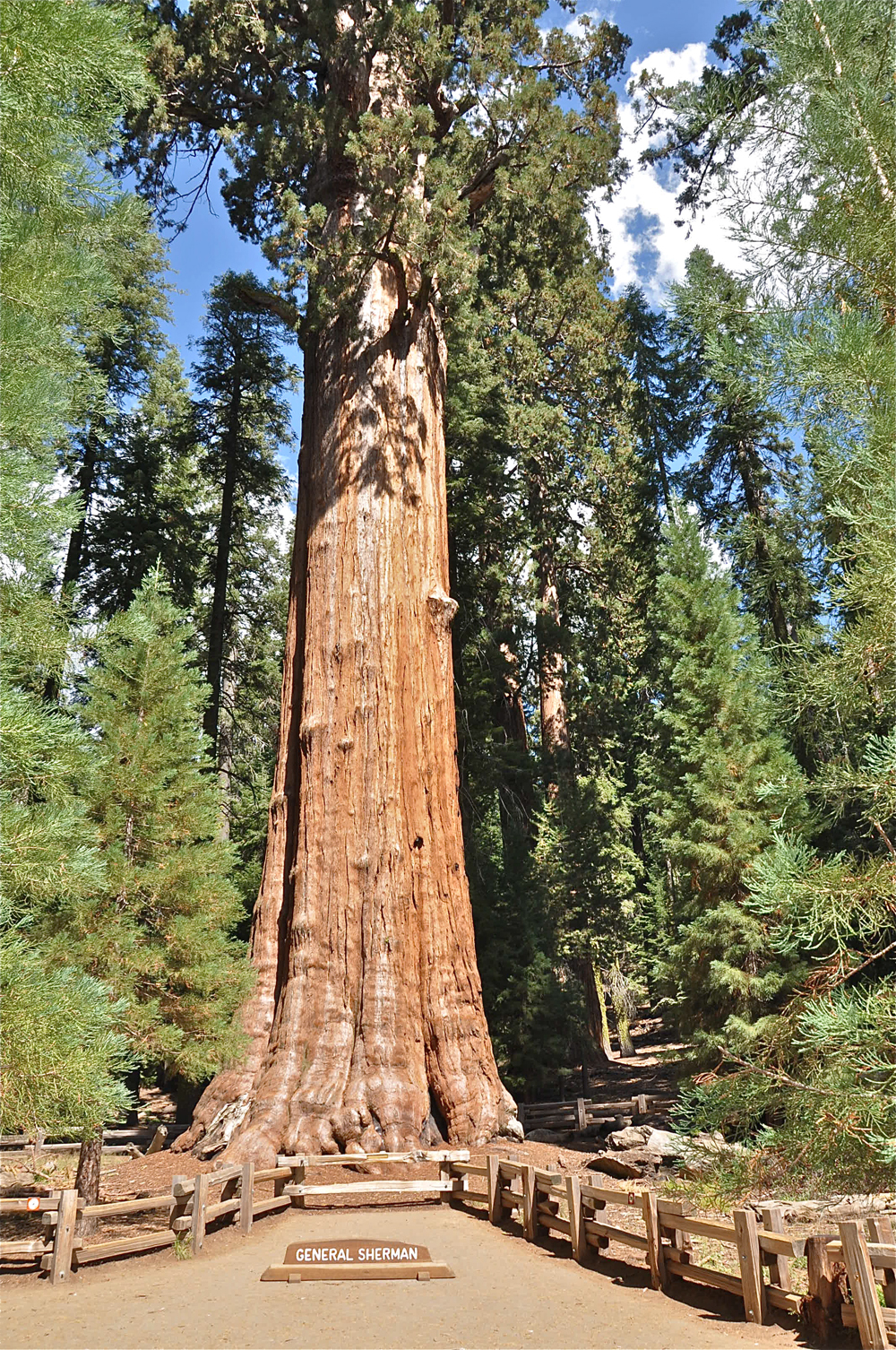
This photo shows the General Sherman Tree found in Sequoia National Park. General Sherman is believed to be the world's largest tree by volume (52,500 cubic feet, or 1,500 cubmic m) and estimated to be the world's heaviest tree at 1,385 tons. The maximum diameter of General Sherman is 36.5 feet (11 m) with a circumference of 103 feet (31 m) and a height of 275 feet (83 m). The diameter of the largest branch is 6.8 feet (2 m) and the first branch above the ground occurs at 130 feet (40 m).
General Giant
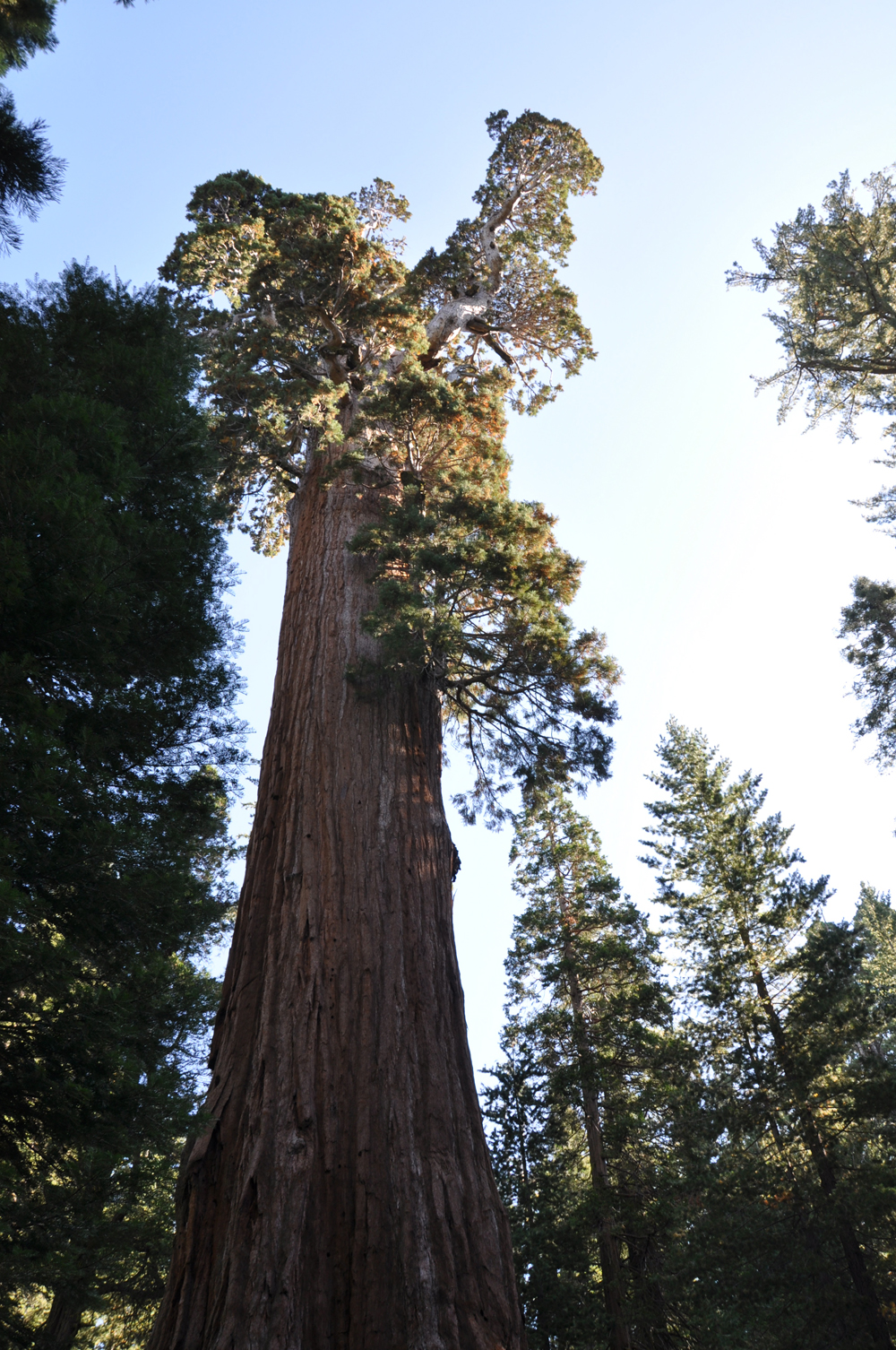
This is a photo of the General Grant Tree, believed to be the second largest tree in the world. It is found in the General Grant Grove, Kings Canyon National Park, Calif. General Grant has an estimated volume of 46,608 cubic feet (1,300 cubic m) and a weight of 1,254 tons. General Grant is 268 feet (82 m) tall, has a maximum diameter of 40 feet (12 m) and a circumference of 107 feet (33 m). It is believed to be 1,700 years old. On April 28, 1926, President Calvin Coolidge designated the General Grant Tree as the Nation's Christmas Tree. On March 29, 1956, President Dwight D. Eisenhower proclaimed the General Grant Tree to be a National Shrine. It is still the United States' only living shrine today.
Sign up for the Live Science daily newsletter now
Get the world’s most fascinating discoveries delivered straight to your inbox.
Living dinosaurs coming back
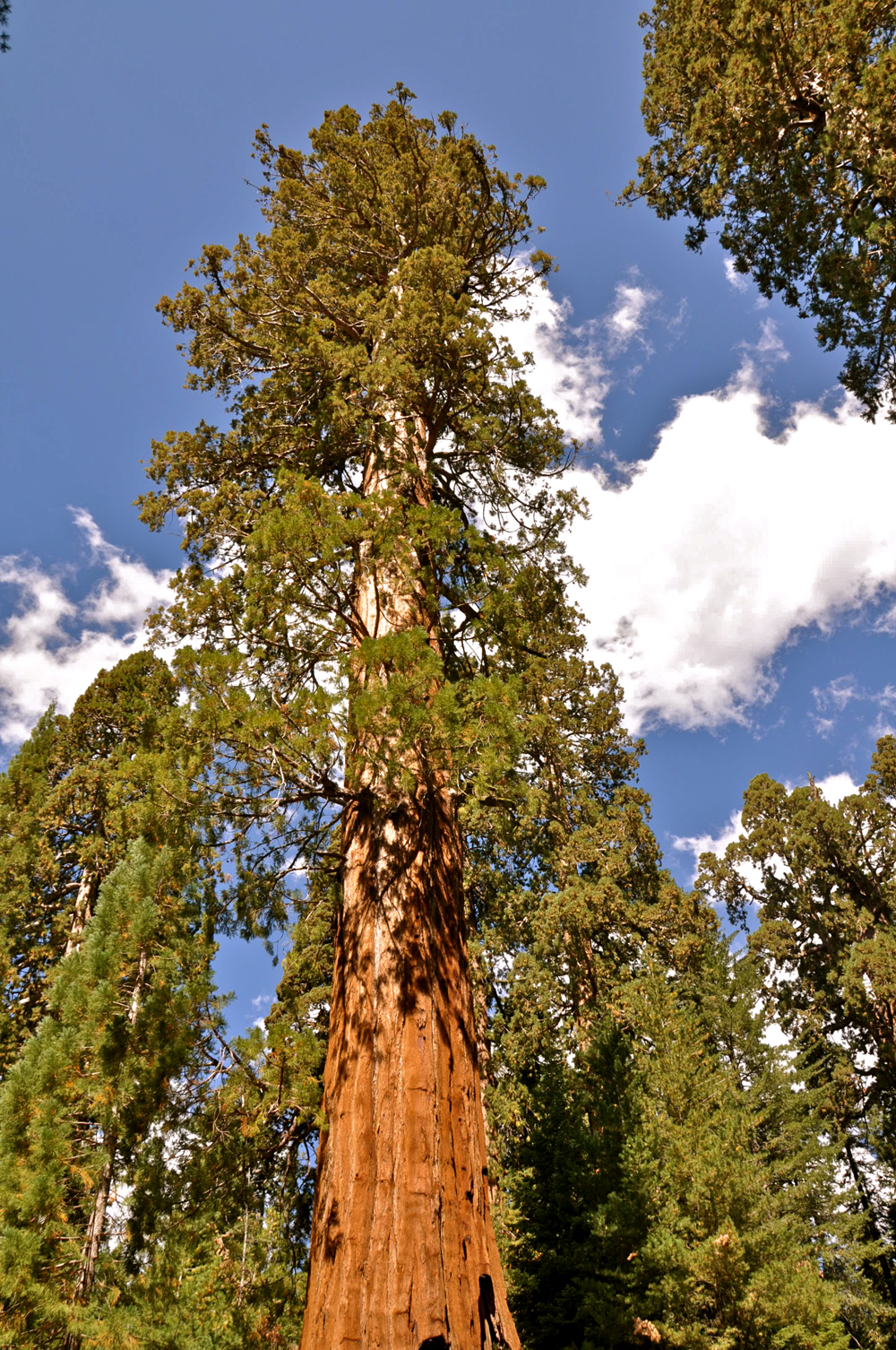
It has been suggested that the Giant Sequoias of central California are "living dinosaurs" and should be seen as national and world treasures. Amazingly they originated before the time of dinosaurs and have outlived the ancient creatures by over 70 million years. Today, thanks to the efforts of man, Giant Sequoias are found growing once again in Europe as well as Australia, New Zealand, South America and Africa. Seeds first arrived in Scotland in August 1853 and in England in December 1853. Growth of these botanical giants is very fast in England, with the tallest tree planted in 1853 now being 177 feet (54 m) tall after 160 years of growth. These awe-inspiring giants have returned to their original landscapes.










